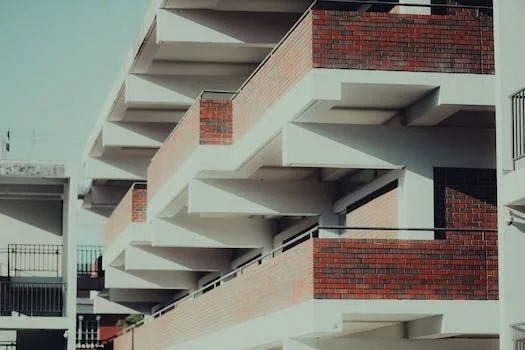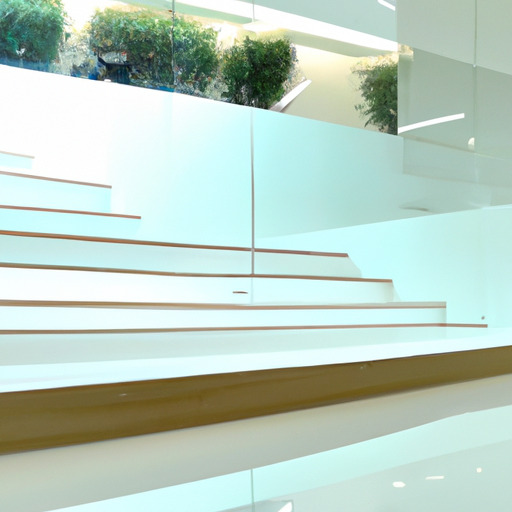Balancing Aesthetics and Functionality: The Role of Scale and Proportion in Home Architecture
The importance of scale and proportion in home architecture cannot be overstated. These two fundamental principles play a crucial role in determining the overall aesthetic appeal and functionality of a residential space. By understanding and applying the concepts of scale and proportion, architects and homeowners can create harmonious, visually pleasing, and efficient living environments that cater to the needs and preferences of their occupants.
Scale refers to the size of an object or space in relation to its surroundings, while proportion is the relationship between the dimensions of different elements within a composition. In the context of home architecture, scale and proportion are essential in ensuring that the various components of a building, such as rooms, doors, windows, and furniture, are appropriately sized and positioned to create a cohesive and balanced design.
One of the primary reasons why scale and proportion are so important in home architecture is that they have a significant impact on the perception of space. A well-proportioned room with appropriately scaled furniture and fixtures can make a small space feel larger and more inviting, while a poorly designed space can feel cramped and uncomfortable, regardless of its actual size. By carefully considering the scale and proportion of each element within a room, architects can create spaces that are not only visually appealing but also functional and efficient.
In addition to influencing the perception of space, scale and proportion also play a critical role in establishing a sense of hierarchy within a home. This is particularly important in residential architecture, where different spaces serve different functions and require varying degrees of privacy and prominence. For example, a grand entrance hall with a high ceiling and large windows can create a sense of importance and set the tone for the rest of the home, while smaller, more intimate spaces, such as bedrooms and bathrooms, can be designed with lower ceilings and more modest proportions to create a sense of coziness and seclusion.
Another key aspect of scale and proportion in home architecture is the relationship between the interior and exterior of a building. A well-designed home should have a harmonious connection between its indoor and outdoor spaces, with the scale and proportion of windows, doors, and other architectural elements carefully considered to ensure a seamless transition between the two. This can be particularly important in homes with limited outdoor space, where the careful use of scale and proportion can help to create the illusion of a larger, more expansive environment.
The importance of scale and proportion in home architecture is also evident in the selection and arrangement of furniture and decorative elements. By choosing furniture that is appropriately scaled for a room and arranging it in a way that maintains a sense of balance and proportion, homeowners can create comfortable and visually appealing spaces that are tailored to their specific needs and preferences. This can be particularly important in open-plan living areas, where the careful use of scale and proportion can help to define different zones within the space and create a sense of order and cohesion.
In conclusion, the concepts of scale and proportion are fundamental to the success of any home architecture project. By understanding and applying these principles, architects and homeowners can create visually appealing, functional, and efficient living environments that cater to the needs and preferences of their occupants. Whether designing a new home or renovating an existing one, the careful consideration of scale and proportion is essential in achieving a harmonious and well-balanced design that is both aesthetically pleasing and practical.
Mastering the Art of Scale and Proportion: Key Principles for Timeless Home Design

The importance of scale and proportion in home architecture cannot be overstated. These two fundamental principles play a crucial role in creating a harmonious and visually appealing living space. When properly executed, scale and proportion can elevate a home’s design from ordinary to extraordinary, ensuring that it stands the test of time. In this article, we will explore the key principles of mastering the art of scale and proportion in home design, and how they contribute to creating timeless and elegant spaces.
Scale refers to the size of an object or space in relation to its surroundings, while proportion is the relationship between the size of different elements within a space. Both principles are essential in achieving a balanced and aesthetically pleasing design. A well-proportioned space not only looks visually appealing but also feels comfortable and inviting. On the other hand, a poorly designed space with elements that are out of scale or proportion can feel awkward and uninviting.
One of the most important aspects of scale and proportion in home design is the relationship between the size of a room and the size of the furniture and decorative elements within it. For example, a large room with high ceilings can accommodate larger furniture pieces and bold decorative elements, while a smaller room with lower ceilings may require more modestly sized furnishings and accessories. By carefully considering the scale of each element within a space, a designer can create a harmonious and visually appealing environment.
Another key principle of scale and proportion in home design is the use of repetition and rhythm. Repeating elements such as patterns, colors, or shapes can create a sense of unity and cohesion within a space. This repetition can be achieved through the use of similar-sized furniture pieces, coordinating fabrics, or even architectural details such as moldings and trim. By establishing a rhythm within a space, a designer can create a sense of order and balance that is both visually appealing and functional.
In addition to repetition and rhythm, the use of contrast is another important aspect of scale and proportion in home design. By juxtaposing elements of different sizes, shapes, or colors, a designer can create a dynamic and visually interesting space. For example, placing a large piece of artwork above a small console table can create a striking focal point within a room. Similarly, using a mix of large and small decorative accessories can add visual interest and depth to a space.
When designing a home, it is also important to consider the scale and proportion of the exterior architecture. The size and shape of a home’s windows, doors, and other architectural features should be in harmony with the overall design of the house. For example, a home with large, grand windows may require equally grand interior spaces to maintain a sense of balance and proportion. By carefully considering the relationship between the interior and exterior elements of a home, a designer can create a cohesive and visually appealing design.
In conclusion, mastering the art of scale and proportion is essential for creating timeless and elegant home designs. By carefully considering the size and relationship of each element within a space, a designer can create a harmonious and visually appealing environment that feels comfortable and inviting. By incorporating principles such as repetition, rhythm, and contrast, a designer can further enhance the overall aesthetic of a space. Ultimately, a well-designed home that adheres to the principles of scale and proportion will stand the test of time, providing its inhabitants with a beautiful and functional living space for years to come.
The Impact of Scale and Proportion on Home Comfort and Livability: Architectural Considerations
The importance of scale and proportion in home architecture cannot be overstated, as these two elements play a crucial role in determining the overall comfort and livability of a space. Scale refers to the size of an object or space in relation to its surroundings, while proportion is the relationship between the size of different elements within a space. Both of these factors contribute to the overall harmony and balance of a design, and when properly executed, can greatly enhance the aesthetic appeal and functionality of a home.
One of the primary reasons why scale and proportion are so important in home architecture is that they have a direct impact on the way a space feels. A room with high ceilings, for example, can feel grand and spacious, while a room with low ceilings may feel cramped and claustrophobic. Similarly, a large room with small furniture can feel empty and uninviting, while a small room with large furniture can feel crowded and uncomfortable. By carefully considering the scale and proportion of the various elements within a space, architects and designers can create environments that are both visually appealing and comfortable to inhabit.
In addition to affecting the way a space feels, scale and proportion also play a significant role in determining the overall functionality of a home. A well-designed space should not only be visually appealing, but also practical and easy to use. This means that the size and placement of various elements, such as doors, windows, and furniture, should be carefully considered in relation to the overall dimensions of the space. For example, a large kitchen with ample counter space and storage may be more functional and enjoyable to use than a smaller kitchen with limited counter space and storage, even if the smaller kitchen is more visually appealing.
Scale and proportion also have a significant impact on the energy efficiency of a home. A well-proportioned space can help to maximize natural light and ventilation, reducing the need for artificial lighting and air conditioning. This not only helps to create a more comfortable living environment, but also reduces energy consumption and associated costs. For example, a room with large windows and high ceilings may require less artificial lighting during the day, while a room with smaller windows and lower ceilings may require more artificial lighting to achieve the same level of brightness.
When designing a home, it is important to consider the scale and proportion of the various elements in relation to the overall size of the space. This includes not only the size and placement of doors, windows, and furniture, but also the size and shape of the rooms themselves. A well-proportioned space should feel balanced and harmonious, with each element contributing to the overall aesthetic and functionality of the space.
In conclusion, the importance of scale and proportion in home architecture cannot be overstated. These two elements play a crucial role in determining the overall comfort and livability of a space, and when properly executed, can greatly enhance the aesthetic appeal and functionality of a home. By carefully considering the scale and proportion of the various elements within a space, architects and designers can create environments that are both visually appealing and comfortable to inhabit. Furthermore, a well-proportioned space can help to maximize natural light and ventilation, reducing the need for artificial lighting and air conditioning, and ultimately contributing to a more energy-efficient and sustainable home.
Q&A
Question 1: Why is scale and proportion important in home architecture?
Answer: Scale and proportion are important in home architecture because they ensure that the various elements of a building are harmonious and well-balanced, creating a visually pleasing and functional space. Proper scale and proportion also contribute to the structural integrity and stability of a building, ensuring that it is safe and comfortable for its occupants.
Question 2: How do scale and proportion affect the overall aesthetic of a home?
Answer: Scale and proportion affect the overall aesthetic of a home by determining the relationship between different architectural elements, such as the size of windows, doors, and rooms in relation to the overall structure. When these elements are well-proportioned, they create a sense of balance and unity, making the home visually appealing and inviting. On the other hand, poorly scaled and proportioned elements can make a home appear awkward, unbalanced, and unattractive.
Question 3: What are some common mistakes in scale and proportion in home architecture?
Answer: Some common mistakes in scale and proportion in home architecture include: oversized or undersized windows and doors that disrupt the balance of the facade, rooms that are too large or too small for their intended purpose, and inconsistent or exaggerated architectural features that clash with the overall design of the home. These mistakes can lead to a disjointed and unappealing appearance, as well as negatively impact the functionality and comfort of the living spaces.
Conclusion
In conclusion, the importance of scale and proportion in home architecture cannot be overstated, as they play a crucial role in creating a harmonious, functional, and aesthetically pleasing living space. By carefully considering these elements, architects and designers can ensure that a home not only meets the needs of its occupants but also contributes positively to the overall visual appeal and character of the surrounding environment.


